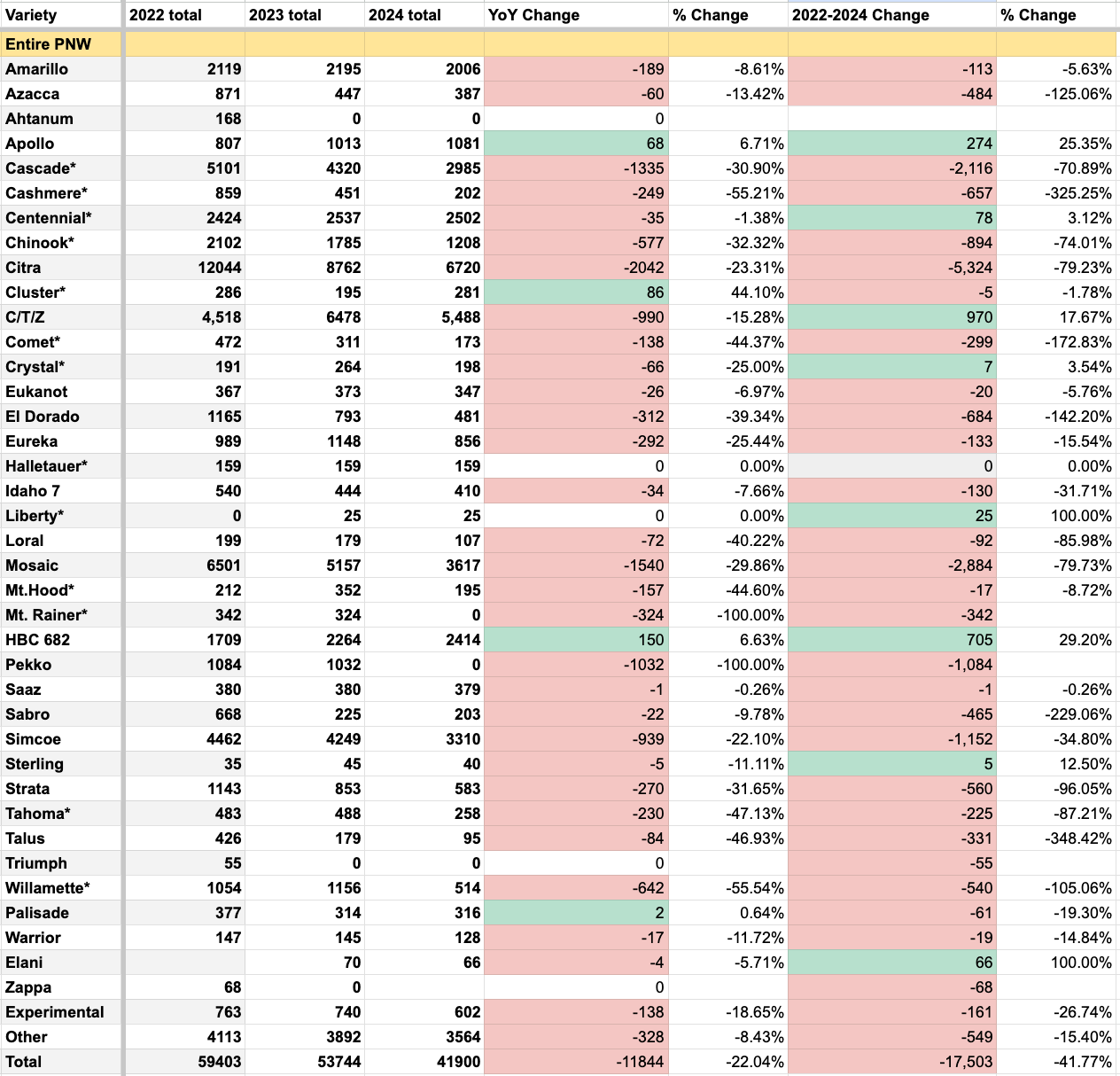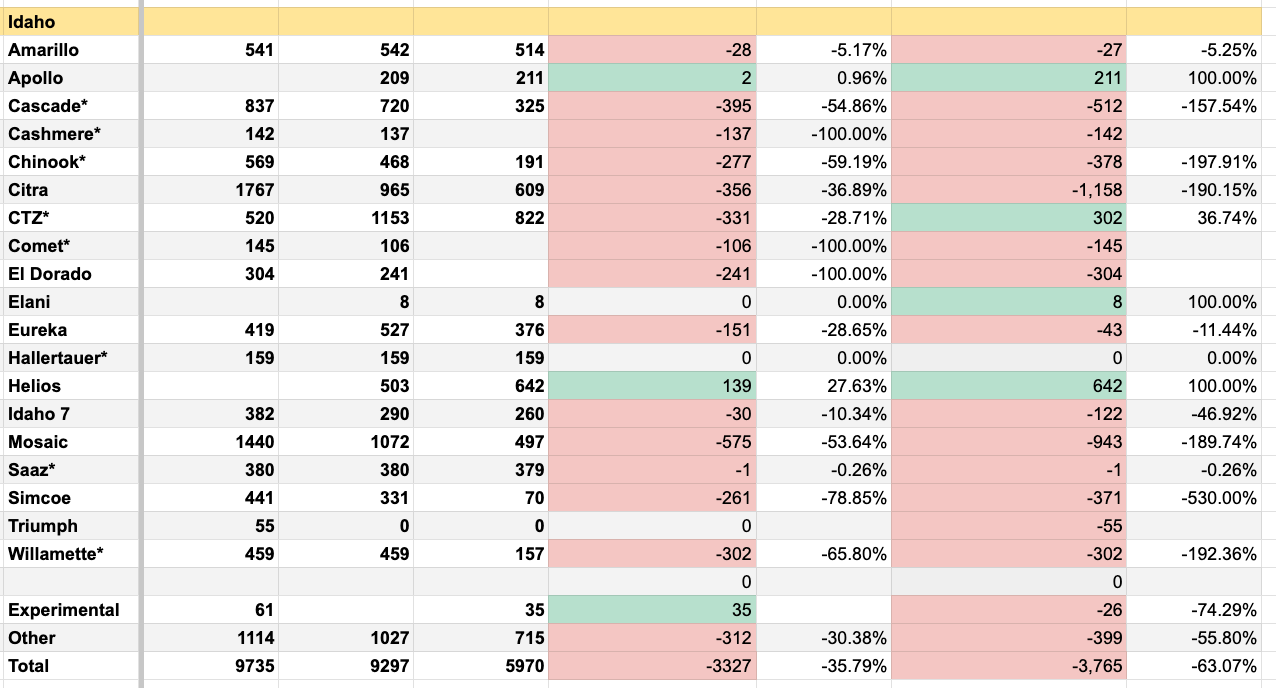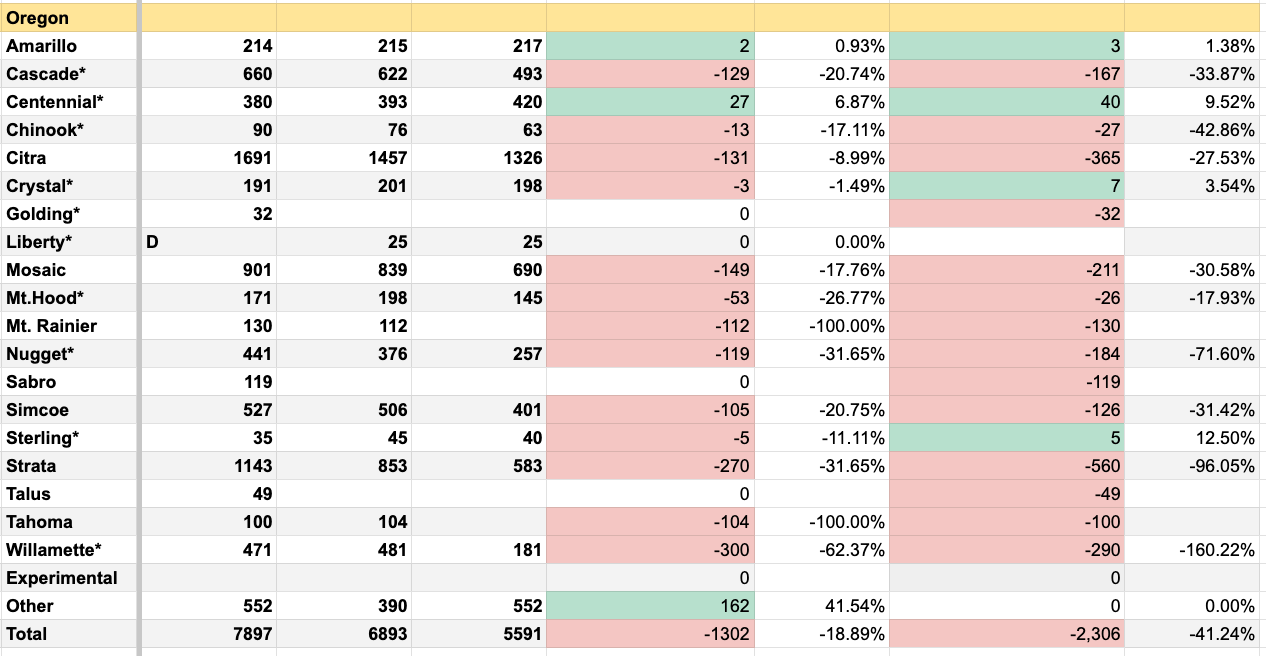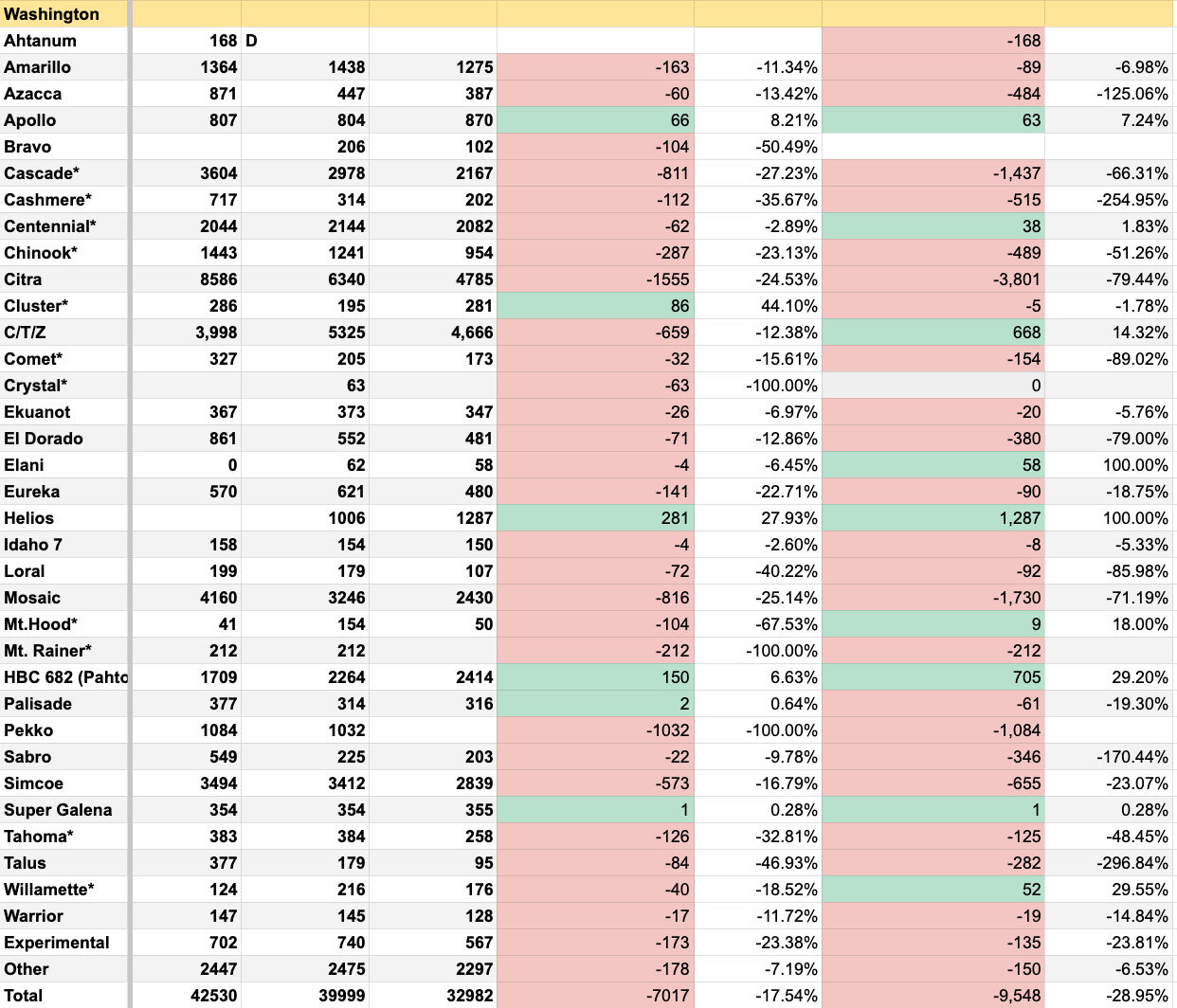Hop Notes 16: Reviewing the 2024 Acreage Strung Report
Expert analysis to help you make better hop decisions.
Each spring the United States Department of Agriculture’s (USDA) National Agricultural Statistics Service (NASS) releases the Hop Acreage Strung for Harvest Report. This report serves as a pre-harvest peek at how many acres will be harvested, of what varieties, in ID, OR, and WA.
The 2024 Acreage Strung Report shows that another round of steep acreage reductions have hit US farms. According to my tracking overall acres are down 22% from 2023 and 41% from 2022.
Lest the percentages and data tables blunt you to the reality behind the numbers, let me remind you that these numbers are more than just data points. They are a story about power, priorities, and market expectations. They represent incredible losses to a number of independent family hop farmers, small independent merchants, and the staff, families and communities of these farms and businesses. And, something that should frighten us all, the trends foretell a future hop market that is more consolidated and less competitive than ever before.
The Numbers
Here is a link to the report. I created tables below based on the numbers in the report.
Total US acre changes by variety:
Idaho specific acreage changes:
Oregon specific acreage changes:
Washington specific acreage changes:
Questions & Answers
Q: How many less acres were strung this year?
A: ~10,000 less total acres, a decline of 18% year over year. Total US hop acreage strung for harvest according to the USDA report is about 44,000 acres. The last time US hop acreage was this small was 2015, the first year the craft boom started to hit the stats sheet.
Commentary:
Looking more closely at the alpha vs aroma hop supply, aroma acreage was down 29% and alpha down 13%, unlike last year where much of the aroma acreage cuts were balanced by alpha acreage increases.
Has US hop acreage bottomed out? In my opinion, no. I think we’ll continue to see falling acreage, perhaps down to under 40,000 acres. There remains an enormous surplus of hops on the global market and craft beer’s demand for hops is not going up. Until something changes in that supply and demand relationship, the hop market is going to be in a tough place.
Q: How did the public hop acreage change compare to private acre changes?
A: 6,424 private acres were cut and 640 were added, a delta of -5,784 (down 19% from 2022). While 86 acres of public hops were added and 4,749 were removed, a delta of -4,663 (down 45% from 2022).
Commentary:
A loss of 45% of total public acres in just two years should be a major alarm bell for anyone with any interest in a relevant public hop market (and by extension a competitive hop market in general, which should be of interest to all of us). The way the market is going public hops are going to continue to lose acreage.
At this point, overall public hop acreage is 25% of the total acreage share according to my numbers. Down 13% from 38% of total acreage last year. Is 25% of acreage enough to maintain relevance? Is 25% of acreage enough to be reliable plan B (or even C?) for farmers who find their proprietary contract cut? Or 5, 10 years from now will we look back on this period as the beginning of the end of a meaningful public hop market in America?
The whole hop market is in circle-the-wagons mode, huddling in their camps and trying to survive the downturn. Unfortunately for public hops, some of the biggest and most powerful wagons would be happy to see public hops gone for good.
Q: How did different states fair in the cuts?
A: The 2024 cuts hit Idaho farmers the hardest in terms of both total acreage (down 31% from 2023) and HBC owned variety acres (down 45% from 2023). Oregon farmers lost 18% of total acreage and 13% of HBC owned acres. Washington farmers lost 15% of total acreage and 23% of HBC owned acres.
Commentary:
My expectations of the 2023 cuts that had me thinking Idaho would be the hardest hit were 1 year early. An overall 31% acreage reduction is incredibly steep.
Why did Idaho get the worst cut? This is the modern way of business - when it’s time for cuts the further you are from power the worse it’s probably going to be for you. The king tightens peasant belts first.
Why focus on HBC acreage declines? HBC (Hop Breeding Company) is responsible for the most successful, largest acreage (and most over-supplied) varieties so had the most cutting to do. Who they cut and by how much offers a rare public view into the decision making priorities of some of the most powerful hop entities in the world.
Here’s a few things you can do if you are a brewer who wants to help support farmers and a competitive hop market:
Incorporate a broader diversity of American hop varieties into regular use.
Seek out a wider pool of ownership models and companies, specifically supporting public hops and hops owned by small merchants or independent farmers.
Source from a variety of hop suppliers and/or direct from the farms themselves.
I’ll say it again - your hop purchasing decisions have real impacts on the economic structure of the hop industry: who wins, who loses, and who has power.
More hop content:
Hop fields are flooded in Germany: (something-something hops are underwater pun). It is unclear right now how much this flooding will impact the crop. My thoughts are with the farms and communities impacted.
Before the official USDA report came out: Steiner put out their own projections on hop acreage declines in counties around the world, they projected the US to have a 21% acreage cut. Pretty darn close. Stan covered this in Hop Queries.
Let’s end this sad issue on a lighter note: Connections is a word game from the New York Times that I enjoy playing. Because Internet you can make your own. I made two focused on hops, enjoy!
Hop Connections Beginner (Game 1)
Hop Connections Difficult (Game 2)
Thanks for reading Hop Notes 16. I hope you enjoyed it. If you did, please consider subscribing or forwarding it to a friend.
That’s all for now. If you have topics you’d like to read about in Hop Notes my inbox is open 24/7: ericsannerud@gmail.com.







Super relevant info once again, and thank you for the word game, it took the mind off the farm for a minute 👍